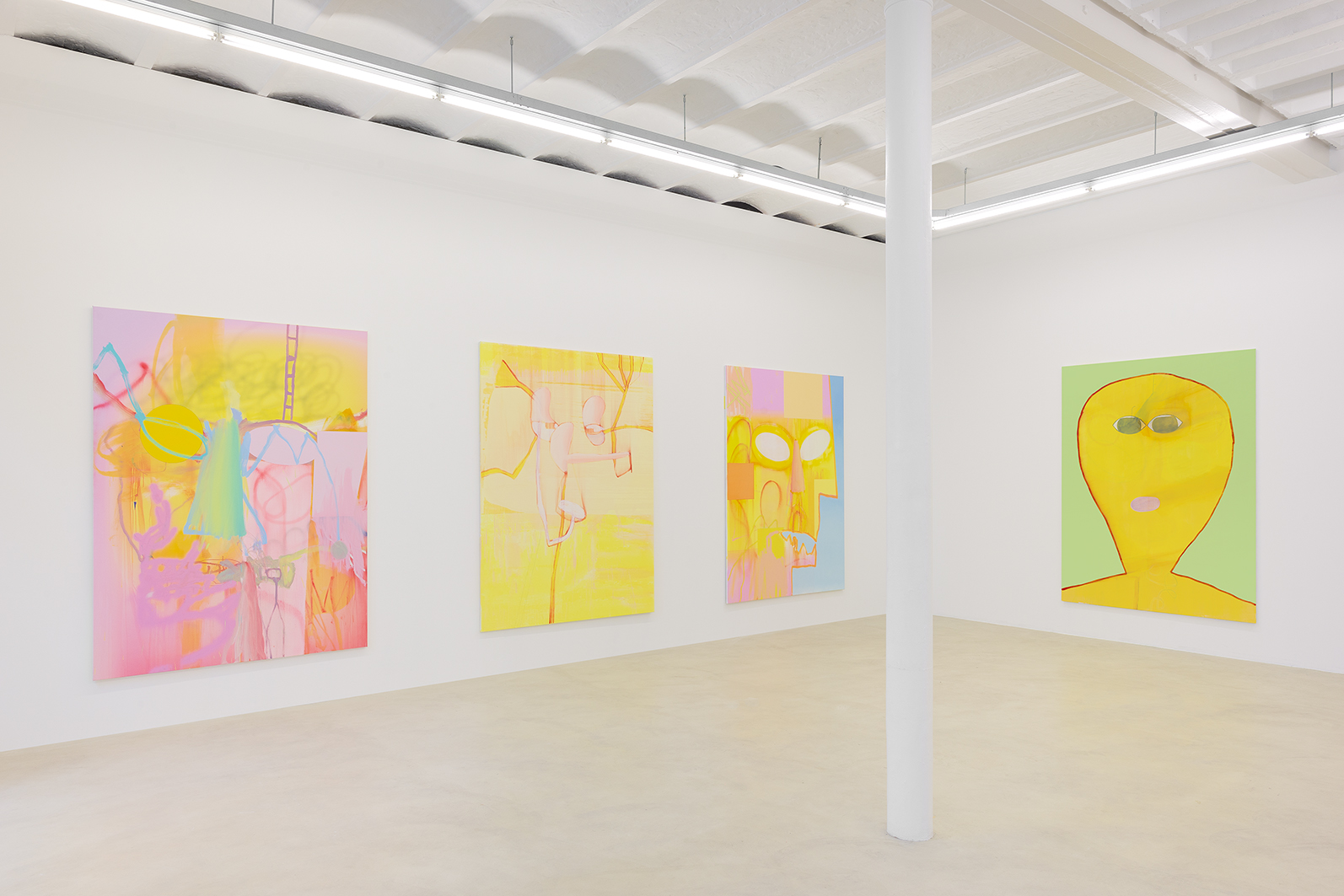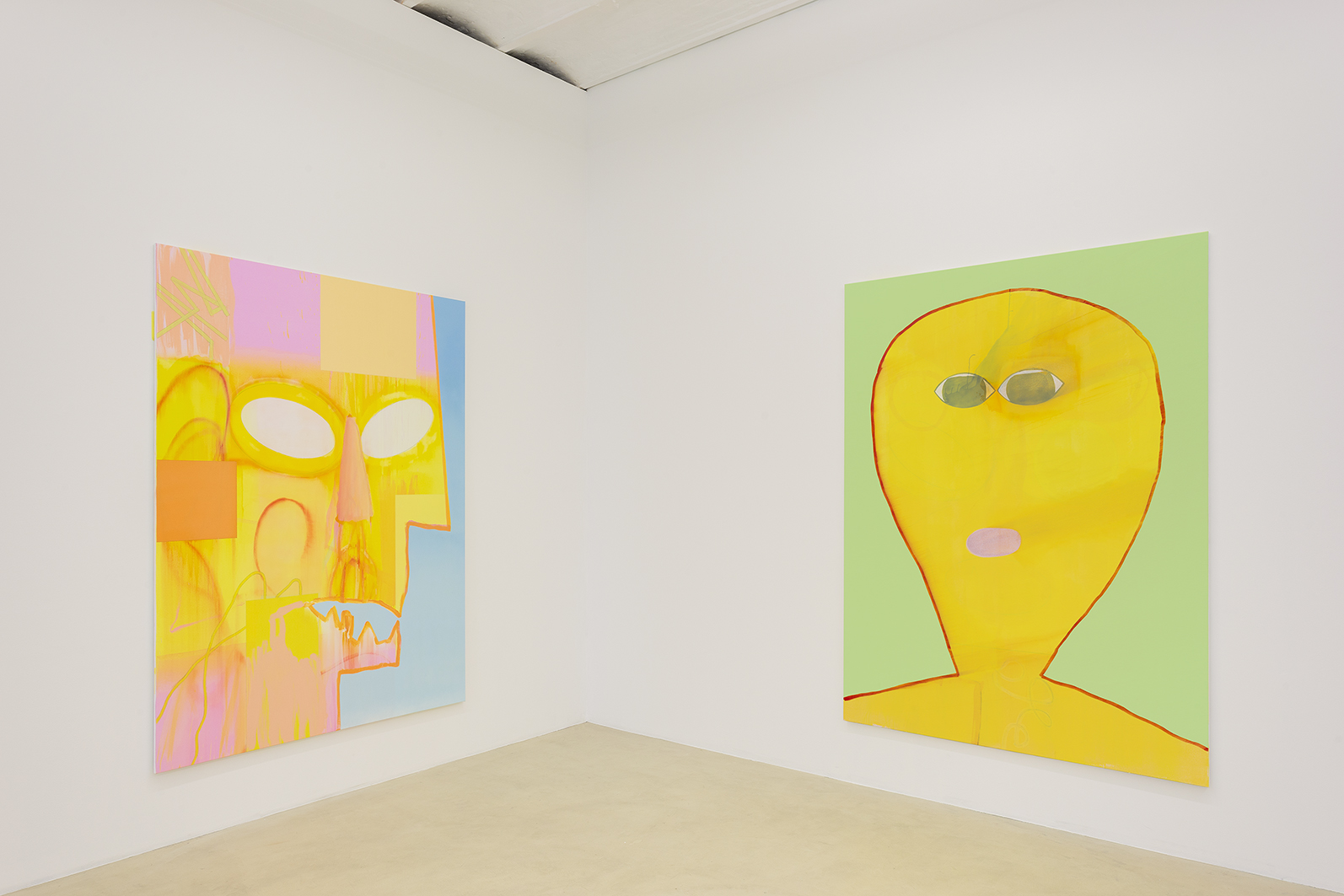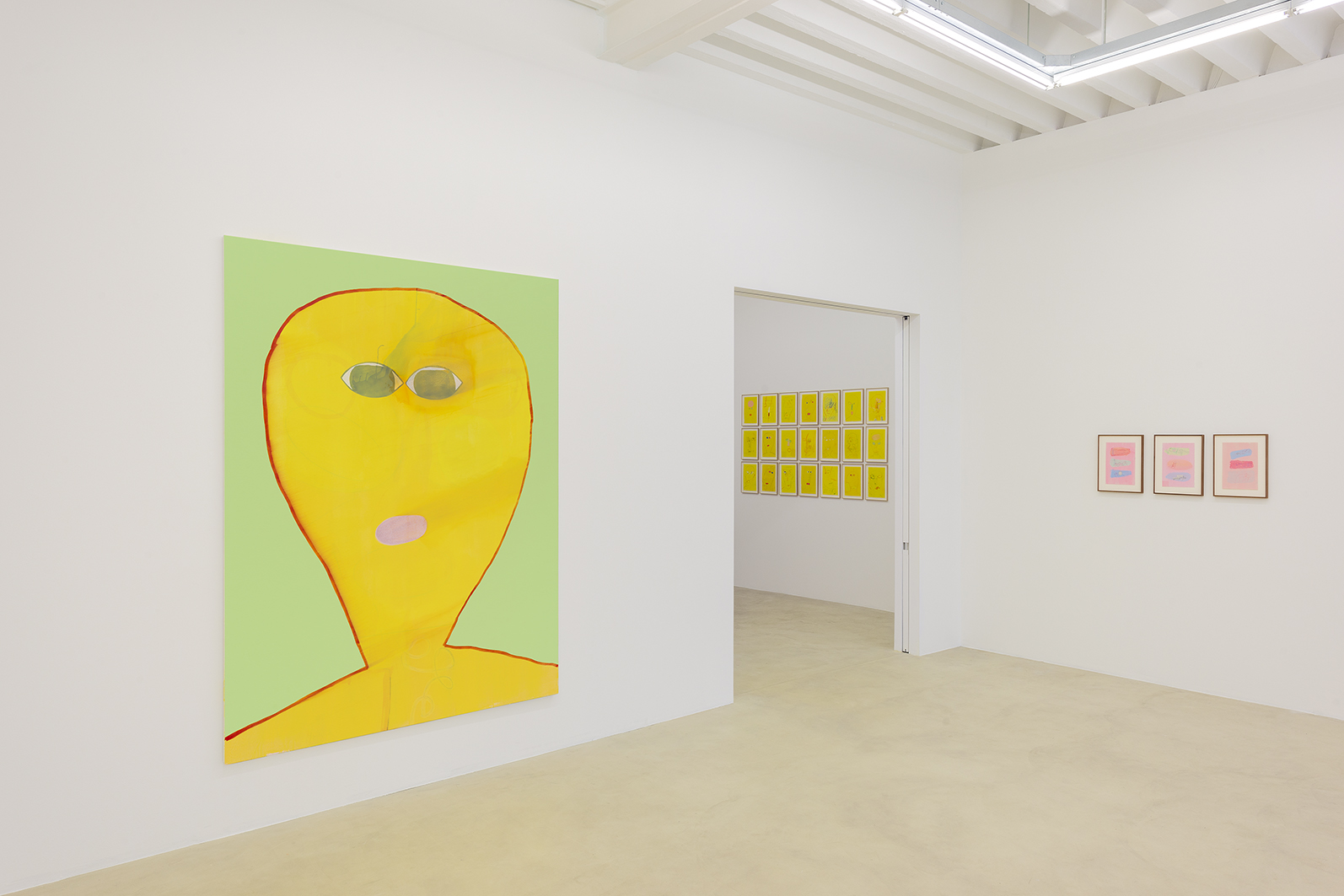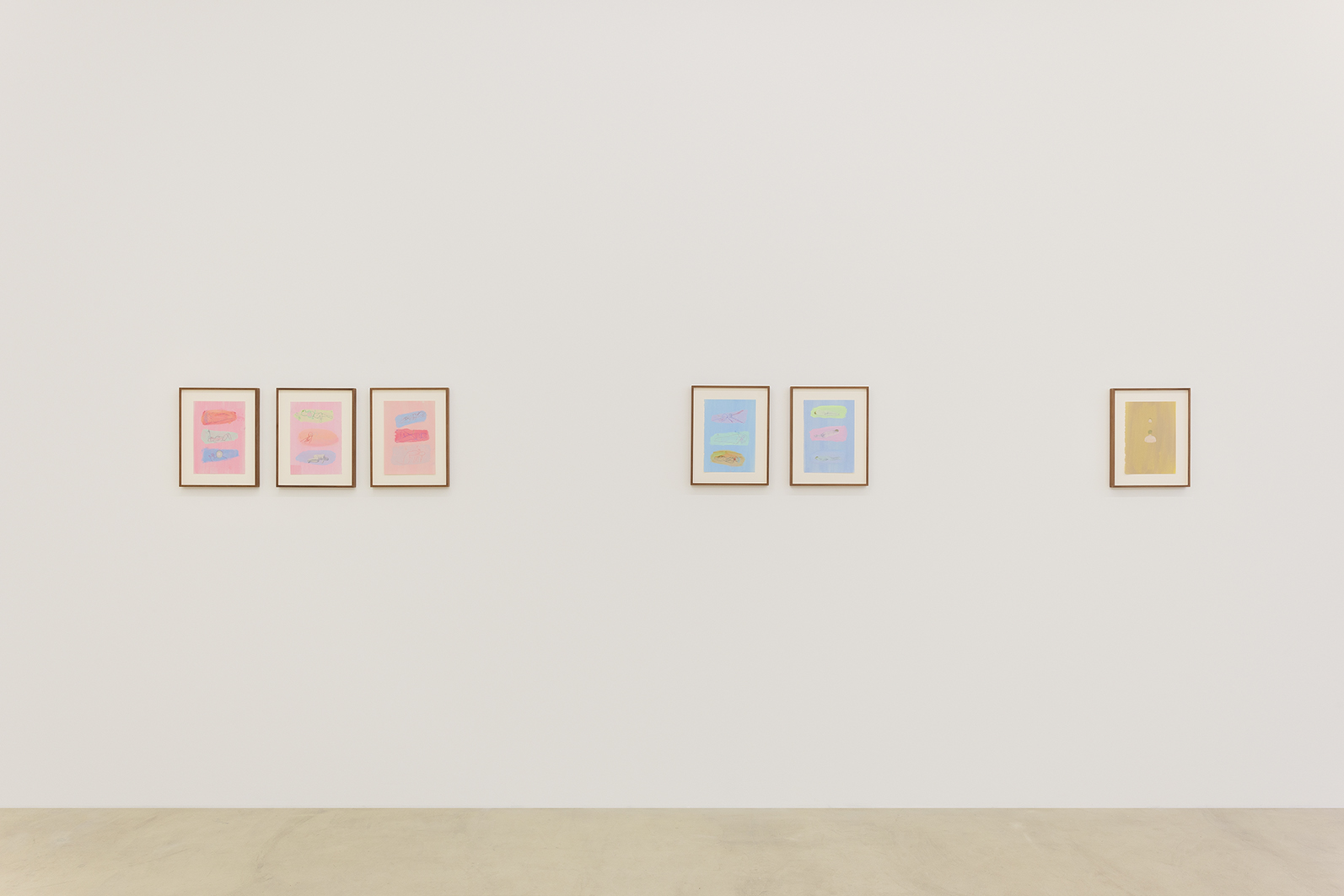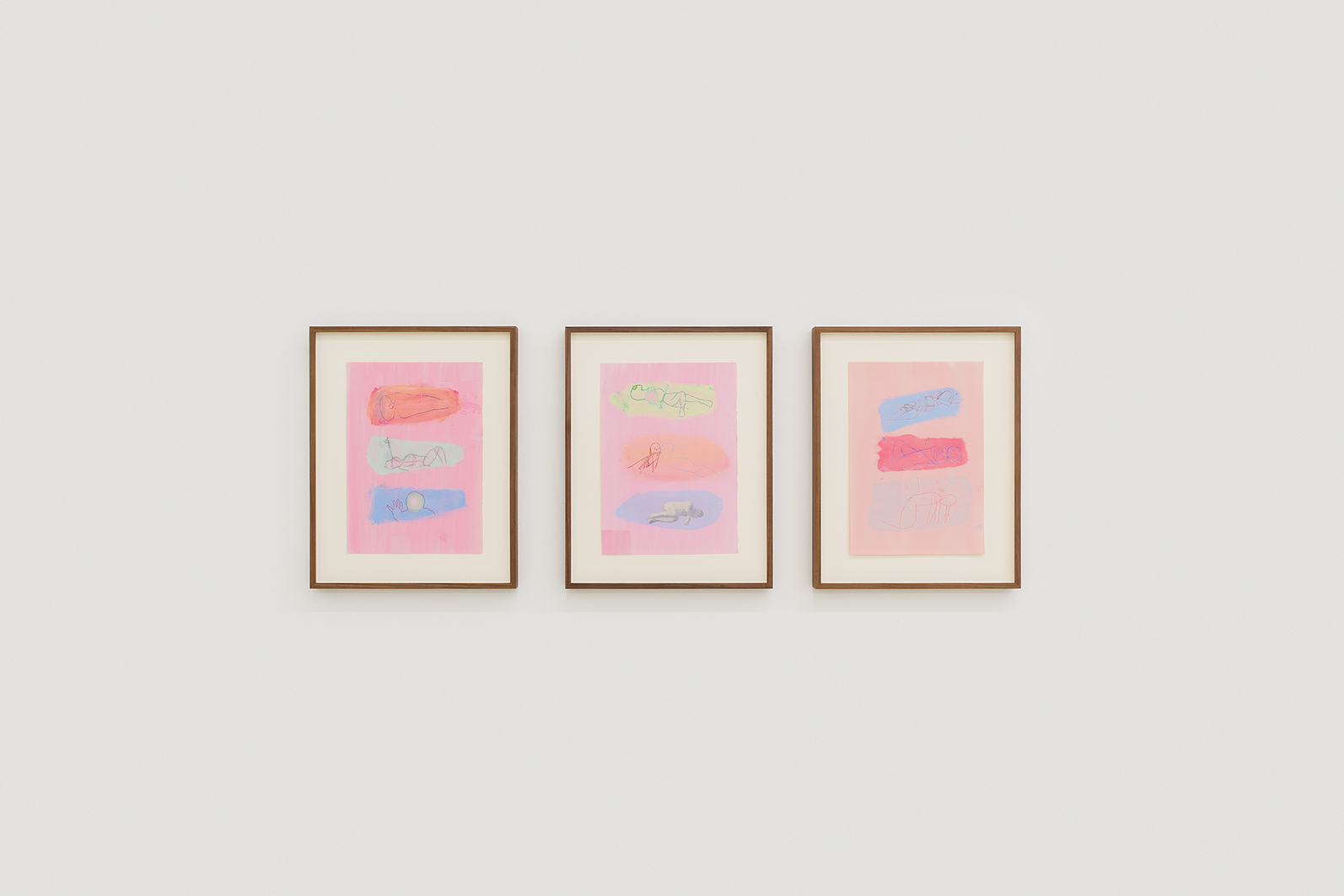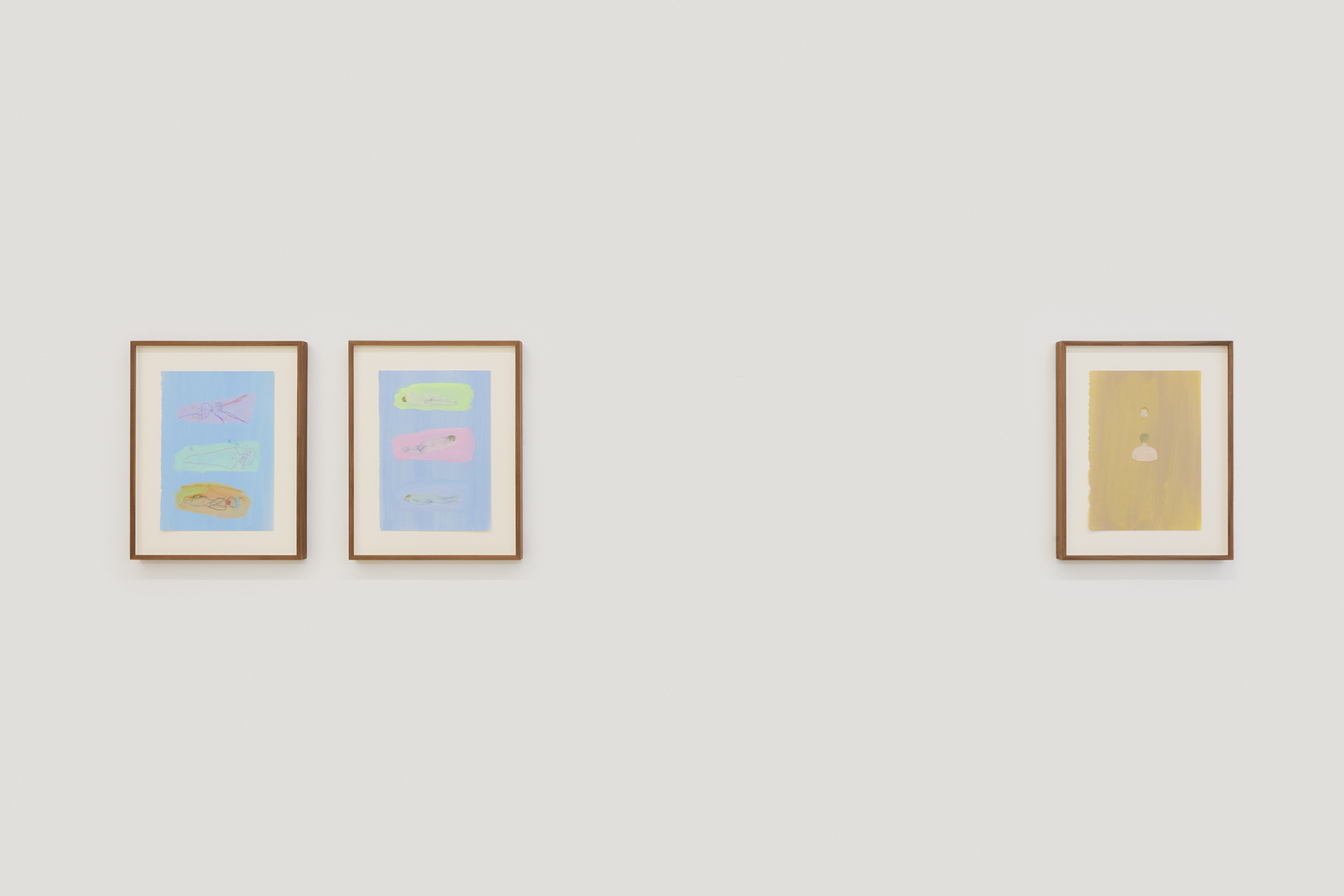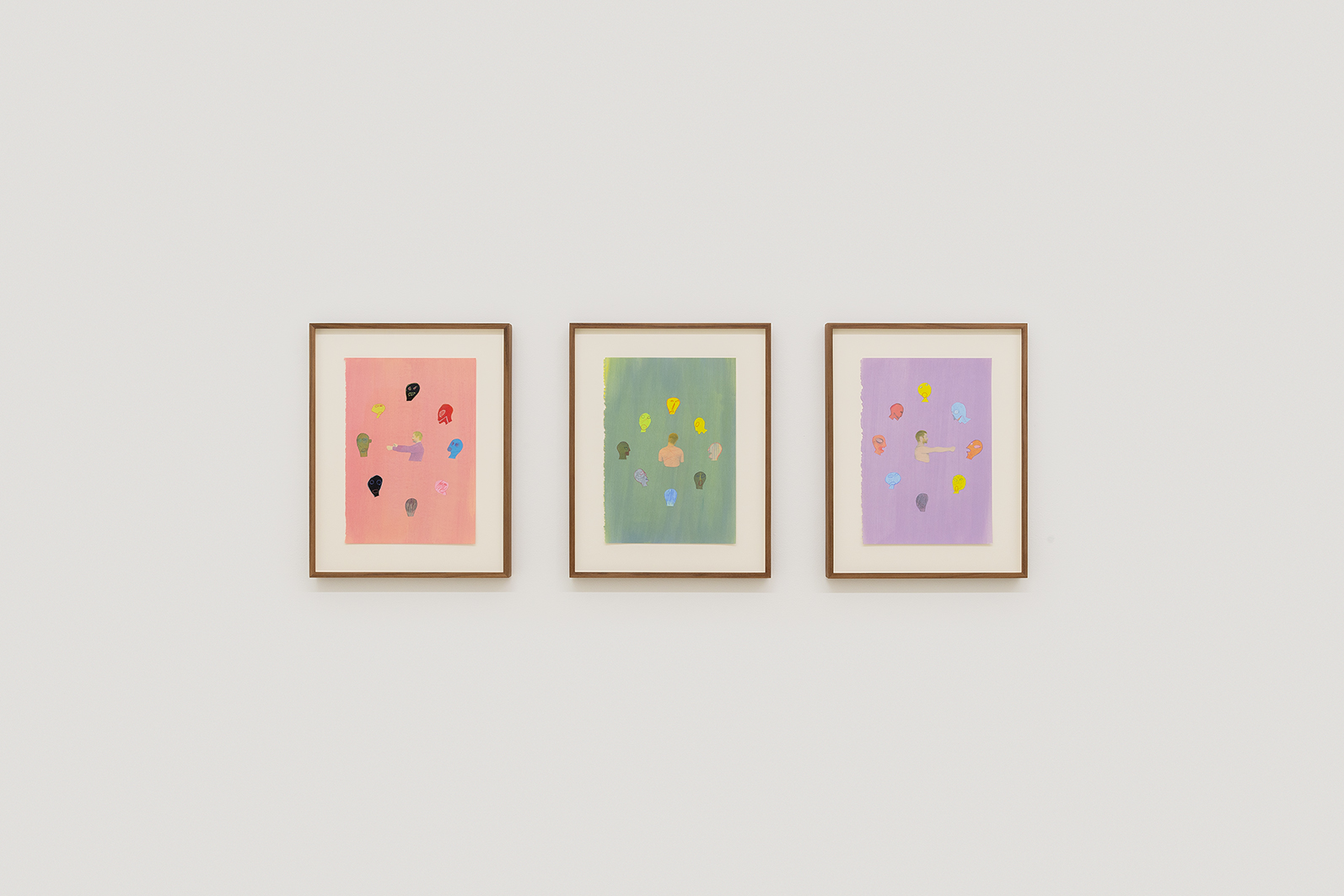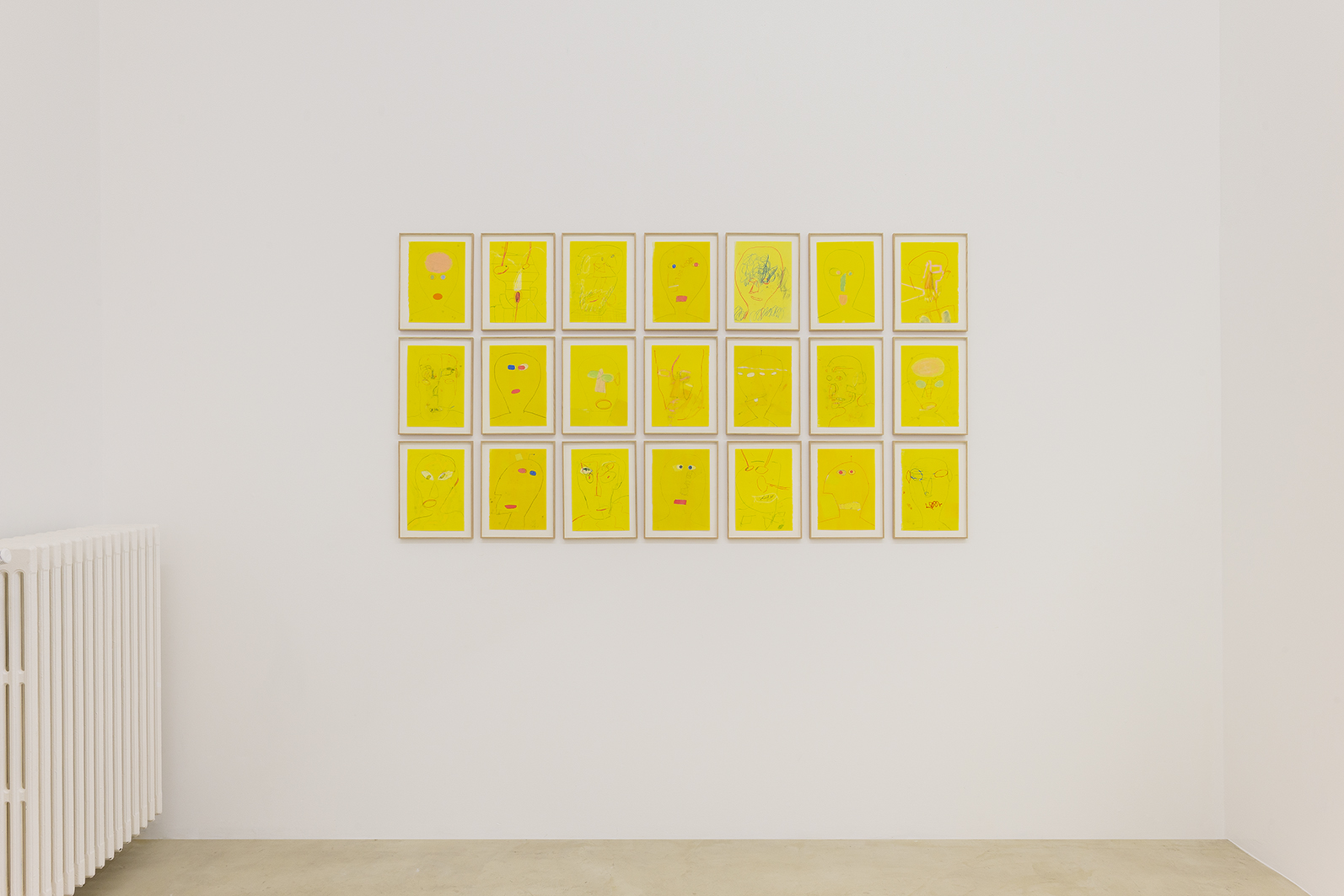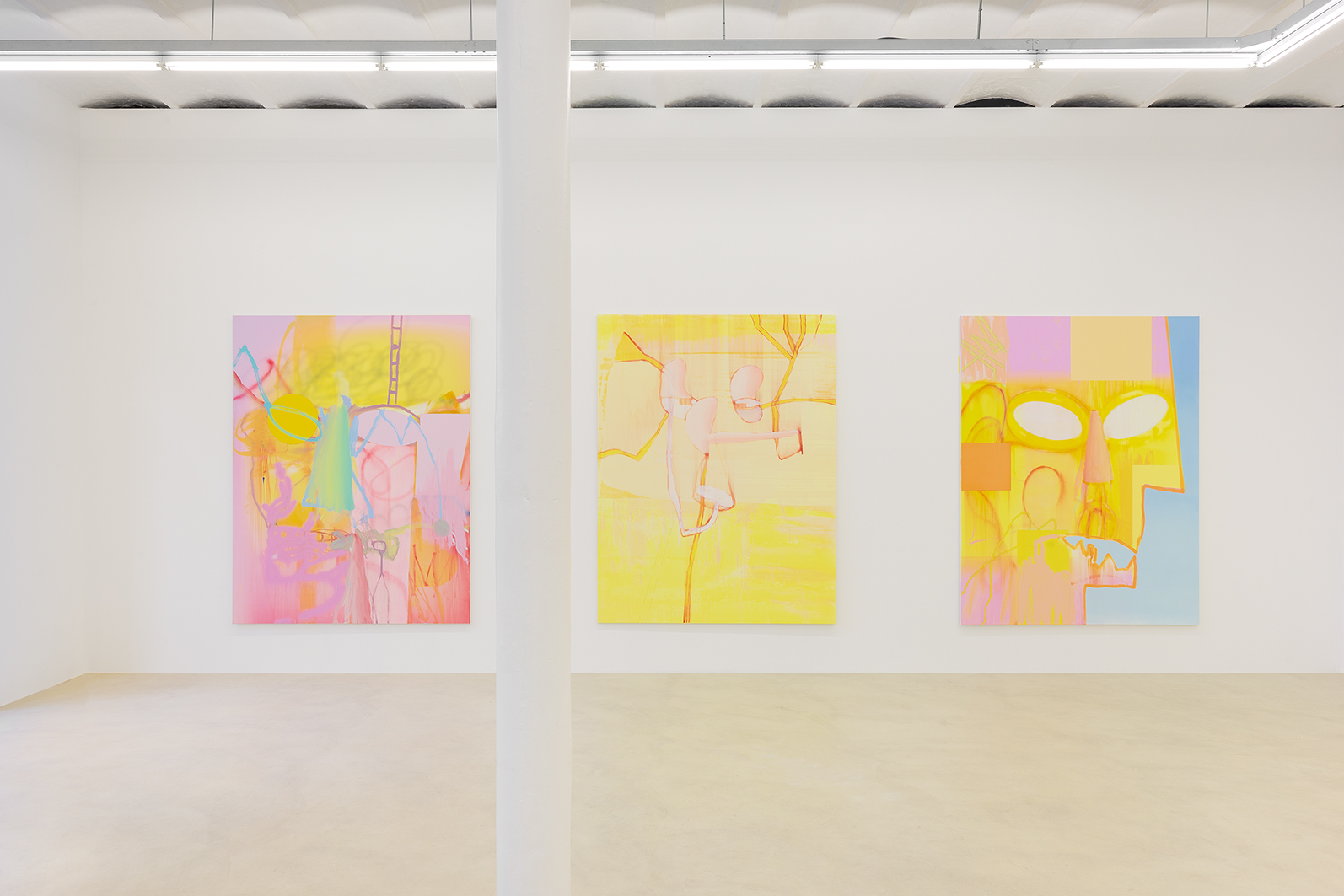
About
Face Off
Two holes are the sign of the face
Brassaï
Julien Meert's pictorial work is at once (hyper) figurative and radically disembodied. In his works, one encounters faces and bodies that emerge from the middle of vividly colored backgrounds. But the bodies are reduced to smooth, stylized silhouettes, and the faces to vague features or a few signs, crudely sketched like so many mannequins and masks that tend towards abstraction. The gazes remain, with empty or wild eyes – the pivot point on which the pictorial action hinges – sometimes reduced to a minimum, sometimes animated by a life that is abstracted and near-autonomous. The more the face is defined, the more the background is reduced to flatness, the more the face is simplified, the more the pictorial events begin to multiply. Julien Meert freely uses all the formal vocabularies that he encounters. He cites, among many sources, Brusselmans and 1970s graffiti, Sigmar Polke and Marisa Merz. From the intersection between the contemporary dynamism of street art's tools (spray paint and graphic stylization) and the richness of a history of art in the public domain is born a new language that, despite the extreme classicism of the subject it tackles, could not belong to any other era than today's.
Julien Meert uses painting as a tool rather than an end in itself, giving it a necessity and an urgency that are often missing from contemporary painting, which too often turns inward. Haunted by the difficulty of stabilizing the shape of his individuality, perpetually threatened by dissolution, Julien Meert always returns to this face and to this body that he does not recognize. One must not, however, reduce his art to therapy, as if Meert sought a return to the norm through this repetition. On the contrary: while he uses painting and drawing to keep control of the things that threaten him, he also uses them to explore the consequences and possibilities that his distorted perception offers him. Like Picasso realized in his famous epiphany at the Trocadéro ("I forced myself to stay, to study these masks, all these objects that people had created with a sacred, magical purpose, to serve as intermediaries between them and the unknown, hostile forces surrounding them, attempting in that way to overcome their fears by giving them color and form. And then I understood what painting really meant. It is not an aesthetic process; it is a form of magic that intervenes between us and the hostile universe, a means of seizing power by imposing a form on our terrors as well as on our desires. The day that I understood that, I realized that I had found my way."), only art that connects to the unknown, not to bring it back into the realm of the known but to confront the same forces that menace us, succeeds in capturing power.
Of his latest works Julien Meert says: "The face symbolizes for me the place where this sort of mental short-circuit plays out, which renders the reality of my body at once tangible, since it is visible in the mirror, and inconceivable, abstract, because this same image is only made possible by my brain. In these latest paintings I tried to get a little closer to this vertigo, to try to contemplate it and embrace it." That which Julien Meert describes as an abstraction or a dissolution of his physical identity engenders a porosity that gives him access to an enriched understanding of the world. The gap that, in the modern narrative, separated human from nonhuman, subject from object, nature from culture, is today profoundly called into question, and Julien Meert's work, at its best, succeeds in articulating these new ways of existing. The challenge for Meert is to successfully transform his singular experience into aesthetic expression and to give form to his perceptions. The Austrian artist Maria Lassnig has pushed to an extreme a similar pictorial exploration of the unstable ties between her body and the world. Over nearly eight decades, she has endlessly decomposed and recomposed her body, transforming it into machine, into animal, into abstraction, and sometimes into herself. Her manner of composition and her audacious use of color moreover call to mind certain formal intuitions of Julien Meert's, like his oscillations between anxiety and invention, seduction and revulsion, withdrawal and display. Over several series of works, Julien Meert advances ever closer to what he calls his "vertigo," and it is thanks to this courage that he can unfold possibilities whose power he does not yet know.
Anne Pontégnie
Epigraph from André Malraux, La Tête d'Obsidienne, Gallimard, 1
